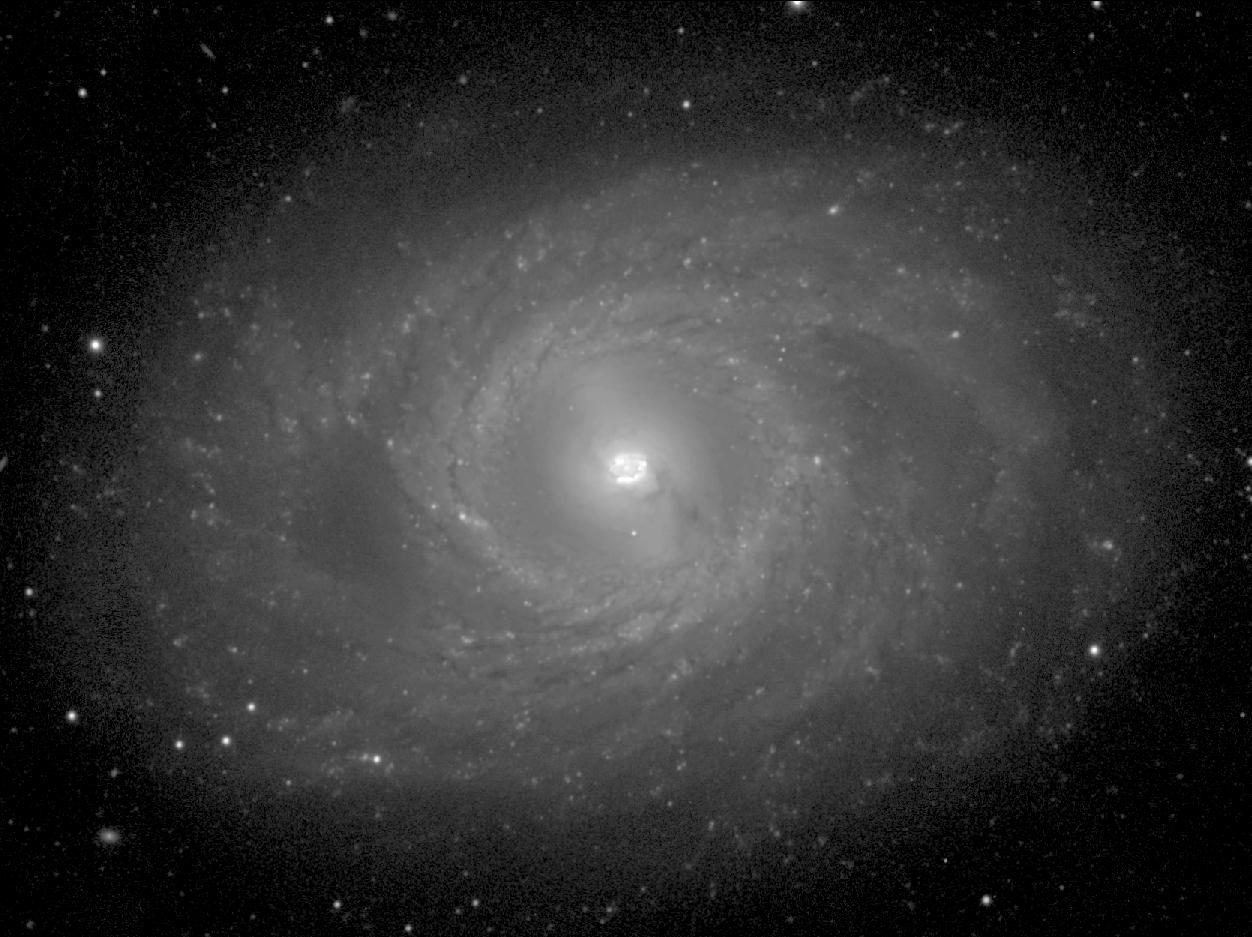

De Vaucouleurs Atlas Type: SB(r)b
Filter: B
Telescope: CTIO 4-m
North left , East down
Field Dimensions: 7.5 x 5.6 arcminutes
RC3 Type: SB(r)b
RSA Type: SBb(r)II
Surface Brightness Range Displayed: 17.0-27.0 mag per square arcsec
Absolute Blue Magnitude: -19.8
Elmegreen Spiral Arm Class: AC 6
De Vaucouleurs Atlas Description:
The Sb classification is based on the general patchiness of the disk and the appearance of the arms, but not on the strength of the bulge which is very small in this case. The inner ring is a well-defined feature similar in many ways to that seen in NGC 1433 . It appears to be made of wrapped spiral arms, but is sufficiently closed to merit the (r) classification. Although relatively circular in projection, the inner ring deprojects into a slightly elongated oval aligned parallel to the bar (Buta 1988). The bar itself does not appear to be particularly strong, but this may be partly due to foreshortening as the bar lies nearly along the minor axis of the disk. The inner ring is dominated by star formation, and the patchiness of the ring continues into the outer disk where complex, doubled spiral arms are found.
The most interesting feature of the galaxy is the bright nuclear ring inside the bar. One of the best known cases, the ring is lined by discrete blue knots and is slightly elongated perpendicular to the bar in projection (closeup). In the disk plane, it is likely to be nearly circular. Inside the nuclear ring, a tiny core is seen, inconsistent with a typical Sb galaxy as previously noted. Leading dust lanes are present in the bar, although these are somewhat irregular. They do not appear to wrap around the nuclear ring as in other barred spirals , but appear to bifurcate on both sides at about the half the bar radius, forming an odd elongated dust ring . The strong curvature of the lanes suggests that the bar is intrinsically rather weak (Athanassoula 1992).
NGC 3351 has been the subject of numerous studies. Rubin, Ford, and Peterson (1975) studied the kinematics of the nuclear ring and suggested that it is contracting. Buta (1988) analyzed velocities in the inner ring and was able to fit a simple oval bar orbit to the motions. Devereux, Kenney, and Young (1992) discovered a nuclear molecular gas bar aligned perpendicular to the primary bar . The properties of the nuclear ring are discussed by Knapen et al. (2002).